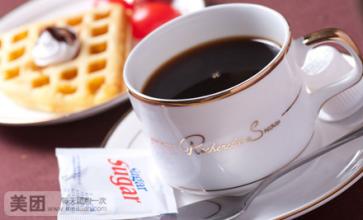Introduction to the characteristics of taste and quality of coffee flavor description treatment in Mercedes Manor in El Salvador
Salvadoran coffee
Coffee production status
"Natural disasters" and "bad luck" are the words that describe the challenges facing El Salvador's coffee industry. Although it has escaped the shadow of war, El Salvador's coffee production still faces challenges from time to time, including: hurricane in 1998; earthquake in 2001; volcanic eruption in 2002; and leaf rust in 2012.
Despite these challenges, El Salvador has maintained a high coffee production, consistently ranking in the top 15 of ICO member countries for total coffee production between 2008 and 2012, according to ICO International Coffee Organization data. In 2013, affected by leaf rust disaster, 70% of farms in China were infected, and the yield dropped sharply by about 40%, ranking down to 16.
El Salvador 08-13 Total coffee production and ranking (unit: 000 bags, 60kg per bag)
El Salvador is tied with Mexico and Guatemala as the producer of Asa and Meldo, and is competing with other countries for the top one or two places in Central America. Highland origin, for the size of large coffee beans, fragrant taste mild. As in Guatemala and Costa Rica, coffee in El Salvador is graded according to altitude, with the higher the altitude, the better the coffee. There are three grades according to altitude: SHB (strictlyhighgrown)= highland, HEC (highgrowncentral)= medium high, CS (central standard)= lowland; The best brand is Pipil, which is Aztec--Mayan.(Aztec-Mayan) The term for coffee, which has been endorsed by the Organic Certified Institute of America, was used in the early 1990s when guerrilla warfare wreaked havoc on the country's national economy, reducing coffee production from 3.5 million bags in the early 1970s to 2.5 million bags in 1990- 91. The eastern part of the country was most affected by guerrilla warfare, and many farmers and workers were forced to leave their estates. The shortage of funds has caused coffee production to plummet, from 1200 kilograms per hectare in the past to less than 900 kilograms per hectare today.
In addition, in 1986 the Government imposed an additional 15 per cent duty on coffee exports, i.e. 15 per cent on top of the existing 30 per cent tax. Taxes, combined with unfavourable exchange rates, severely reduced coffee exports and, with them, quality.
The government finally realized the huge role of coffee in the national economy, such as employment, foreign exchange and agricultural production, so in 1990, it privatized part of the coffee export industry, hoping to increase the yield of coffee in the export market.
Today, this coffee accounts for 40% of the country's exports. The best quality coffee is exported from January to March, and 35% of the extra hard beans are exported to Germany

Important Notice :
前街咖啡 FrontStreet Coffee has moved to new addredd:
FrontStreet Coffee Address: 315,Donghua East Road,GuangZhou
Tel:020 38364473
- Prev

Introduction to the Variety characteristics of Coffee Flavor description method in Tianyi Manor, Nicaragua
Since July 1927, Augusto. Cesar. Sandino led the people in a guerrilla war against the US occupation, forcing the US military to withdraw in 1933. On February 21, 1934, the Commander of the Nicaraguan National Guard, Anastacio. Somocha. Garcia assassinated Sandino at the behest of US President Roosevelt. He became president in 1936 and has been pro-American for more than 40 years since then.
- Next

Introduction of Coffee Flavor description treatment method in Panamanian Jade Manor
There are also many excellent manors in Pokuit, except the famous Emerald Manor, Alida Manor, Aqaba Manor and so on, all of which produce high-quality boutique coffee. This is not only due to the superior ecological conditions of the Pokuit region of Panama and the fertile volcanic ash soil of the Baru volcanic land. Another important factor is that the Panamanian wave
Related
- Does Rose Summer choose Blue, Green or Red? Detailed explanation of Rose Summer Coffee plots and Classification in Panamanian Jade Manor
- What is the difference between the origin, producing area, processing plant, cooperative and manor of coffee beans?
- How fine does the espresso powder fit? how to grind the espresso?
- Sca coffee roasting degree color card coffee roasting degree 8 roasting color values what do you mean?
- The practice of lattes: how to make lattes at home
- Introduction to Indonesian Fine Coffee beans-- Java Coffee producing area of Indonesian Arabica Coffee
- How much will the flavor of light and medium roasted rose summer be expressed? What baking level is rose summer suitable for?
- Introduction to the characteristics of washing, sun-drying or wet-planing coffee commonly used in Mantenin, Indonesia
- Price characteristics of Arabica Coffee Bean Starbucks introduction to Manning Coffee Bean Taste producing area Variety Manor
- What is the authentic Yega flavor? What are the flavor characteristics of the really excellent Yejasuffi coffee beans?

